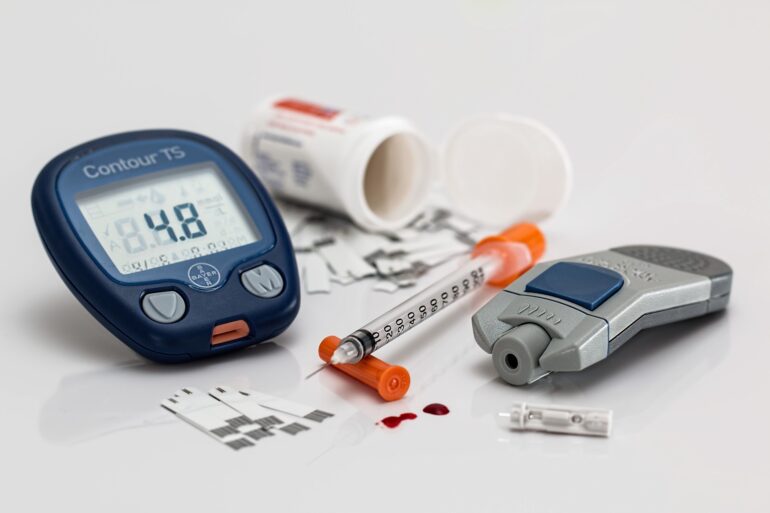TL;DR:
- Research reveals the effectiveness of machine learning models in predicting diabetic retinopathy progression using ultra-widefield images.
- AI predictions achieved over 91% accuracy, outperforming original labels in identifying disease progression.
- Machine learning algorithms can refine risk estimation, personalize screening intervals, reduce costs, and improve vision-related outcomes.
- Diabetic retinopathy cases are expected to double by 2050, necessitating accurate and efficient assessment methods.
- AI algorithms offer a powerful tool for clinicians in assessing diabetic retinopathy progression, overcoming variations in medical knowledge and clinical experience.
- A dataset of 9,970 unique images was used to train and validate machine learning models, achieving remarkable results.
- The use of artificial intelligence holds the potential to revolutionize precision medicine and prevent irreversible vision loss.
Main AI News:
Cutting-edge research unveils groundbreaking advancements in the field of diabetic retinopathy progression assessment, leveraging the power of machine learning models and ultra-widefield images. The remarkable findings, presented at the prestigious 83rd American Diabetes Association Scientific Sessions (ADA 2023), have demonstrated the unprecedented accuracy and feasibility of artificial intelligence (AI) predictions, surpassing 91% in correctly identifying the progression of this debilitating condition.
Physicians have long grappled with the daunting task of estimating the risk of diabetic retinopathy progression in patients afflicted with diabetic eye disease. Dr. Paolo S. Silva, esteemed co-chief of telemedicine at Beetham Eye Institute, Joslin Diabetes Center, and associate professor of ophthalmology at Harvard Medical School, emphasizes the significance of this breakthrough, stating, “Our findings show that potentially, the use of machine learning algorithms may further refine the risk of disease progression and personalize screening intervals for patients, possibly reducing costs and improving vision-related outcomes.“
The prevalence of diabetic retinopathy is predicted to nearly double by 2050, affecting a staggering 14 million individuals in the United States alone. However, accurately determining the risk of progression in a clinical setting proves to be a formidable challenge, as the estimation requires varying degrees of medical knowledge and clinical experience among clinicians. To address this critical issue, the research team explored the potential of AI algorithms in enhancing the risk estimation process for diabetic retinopathy progression.
The investigative team meticulously developed and validated machine learning models specifically designed for diabetic retinopathy progression using ultra-widefield retinal images. Each image was meticulously analyzed and labeled by experienced clinicians, based on the severity of diabetic retinopathy at baseline and its subsequent progression over a three-year period, utilizing the renowned Early Treatment Diabetic Retinopathy Study (ETDRS) severity scale.
The dataset comprised eight distinct classes, including no diabetic retinopathy (DR) non-progression (14.62%), mild non-proliferative DR (NPDR) progression (10.16%)/non-progression (10.73%), moderate NPDR progression (10.1%)/non-progression (15.85%), severe NPDR progression (11.27%)/non-progression (10.68%), and proliferative DR (16.55%). To ensure robust model training, the analysis divided the dataset of 9,970 unique images into three subsets: training, validation, and testing, with proportions set at 60-20-20, respectively.
Addressing the issue of class imbalance, the investigators employed data augmentation techniques during the model building phase. Impressively, the ResNet model trained on this comprehensive dataset achieved an exceptional classification test accuracy of 81% and an impressive area under the curve (AUC) score of 0.967 on the test dataset. The primary objective of the model was to minimize false negatives, ensuring that the predicted class consistently reflected a higher level of disease progression than the true label.
Upon rigorous analysis, the investigative team unveiled that the predicted labels for an astonishing 91% of the images aligned either correctly or exhibited greater progression than the original labels. These groundbreaking results conclusively affirm the accuracy and feasibility of harnessing machine learning models developed using ultra-widefield images to identify the progression of diabetic retinopathy.
Conclusion:
The integration of artificial intelligence into the assessment and prediction of diabetic retinopathy progression represents a significant breakthrough in the market. With the ability to improve accuracy, refine risk estimation, and personalize screening intervals, AI algorithms offer immense value to healthcare practitioners. This advancement has the potential to transform the diabetic retinopathy market, providing more efficient and cost-effective solutions while significantly improving vision-related outcomes for patients.

